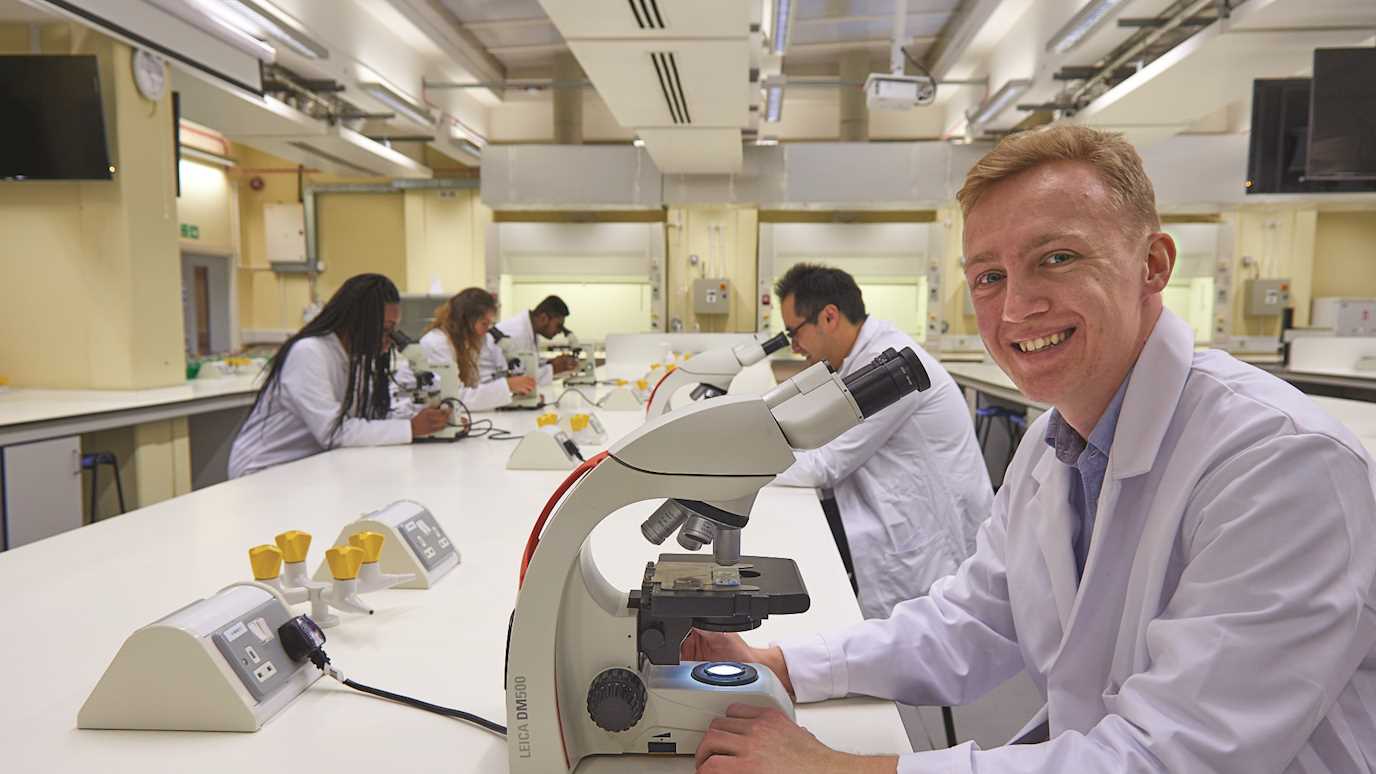State-of-the-art facilities
We continue to invest in facilities for teaching and research, such as equipment for mass spectrometry, bioinformatics and protein and gene sequencing. We also have top-class imaging facilities including confocal laser scanning microscopes for 3D live-cell imaging.
Aquariums
The Bourne Laboratories are equipped with both marine and freshwater aquaria, suitable for housing a wide range of fish and invertebrates in specialist facilities. Current species housed include zebra fishes (Danio rerio), Siamese fighting fishes (Betta splendens), Chinese mitten crabs (Eriocheir sinensis) and members of the Poeciliidae family.
Glasshouses
There are three plant growth chambers attached to an ancillary building containing a seed drying room and harvest room as well as a large potting, sowing area and compost store. It has been ergonomically designed to enable technicians and research workers to move plant material easily throughout the facility. The highly contemporary design optimises the amount of light which enters the plant propagation space.
A biodiverse campus
Our leafy campus is home to a wealth of species of plants and animals which provides plenty of fieldwork opportunities for whole-organism biology. We are also close to extensive areas of natural habitat and sites of national scientific importance such as Windsor Great Park, Box Hill and Chobham Common.
Museum
The Department’s comparative anatomy museum comprises approximately 1,500 zoological and botanical specimens along with more than 12,000 microscope slide preparations. These resources were used for biological and biomedical teaching in the preceding departments of ‘Natural Science’, ‘Zoology’, ‘Botany’, and ‘Human Physiology’ which form an integral part of the 150 year history of the Department of Biological Sciences.
Although some material dates back to the 19th century, the bulk of the collection was acquired independently by Royal Holloway and Bedford Colleges during the early and mid-20th century. Some specimens were collected by members of staff and students on field trips. Further material was donated by local zoos, safari parks or private individuals. The Royal Holloway collection has its roots in the general-purpose 'College museum' which was created when the institution opened in 1886, whilst the Bedford collection gradually accrued in individual departments from the late 19th century onwards. Unfortunately the Bedford zoological and botanical museums along with the herbarium were, with the exception of a handful of specimens, destroyed during the war in 1941 when Bedford College suffered substantial bomb damage necessitating these collections to be largely rebuilt in the late 1940’s.
The museum remains in constant use today at Bourne Laboratory and forms an important part of the undergraduate teaching provision where it is primarily used to support practical classes as part of the ‘Biology’, ‘Ecology and Environment’ and ‘Zoology’ degree courses.
Bourne Laboratory
Our base is the Bourne Laboratory right at the heart of Royal Holloway's parkland campus. Our laboratories have cutting-edge equipment and facilities for excellent first-hand training in scientific skills.





















